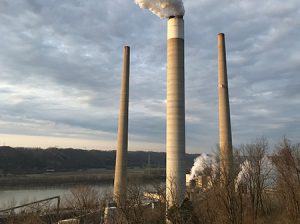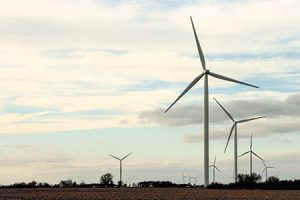
UPDATE: Duke Energy Indiana seeks OK for natural-gas units at Cayuga in $3.3B project
Customers will see a rate increase of about 5.4% between 2026 and 2031 if Duke receives approval to add to electricity rates over time rather than at once.

Customers will see a rate increase of about 5.4% between 2026 and 2031 if Duke receives approval to add to electricity rates over time rather than at once.

Indiana has joined 10 other states in bringing a lawsuit against three of the world’s largest investment companies, with Attorney General Todd Rokita alleging the firms are illegally conspiring to manipulate energy markets.

Hoosier coal advocates pushing for a ban on early coal-fired plant retirements have found allies among Senate leaders. But a key House lawmaker on Thursday publicly signaled opposition.

The investment would make AES Indiana the first utility in Indiana to abandon the use of coal as a fuel source, if state regulators agree, the company said.

For the first time, federal regulations will cover the nearly 50 dumps spread across 14 locations in Indiana that were previously exempted from cleanup provisions.

Indiana Attorney General Todd Rokita called the effort an overreach “that threatens the reliability of our power grid and will once again jack up utility costs for regular, everyday Hoosiers.”

State Rep. Cindy Ledbetter introduced the bill this month, saying utilities are moving too fast to retire and replace generating capacity that might be needed as demand for electricity grows.

No date was given for when existing coal-powered plants would have to go, but other Biden regulatory actions and international commitments already in the works had meant no coal by 2035.
More than a third of coal ash sites are in five states, Indiana, Illinois, Ohio, Pennsylvania and Kentucky, according to data compiled by Earthjustice.

An Indiana environmental group says the utility is pumping more than 1 million gallons of contaminated water a day into the river from coal ash ponds at its Eagle Valley Generating Station in violation of the federal Clean Water Act.

New coal plants were added in 14 countries, and eight countries announced new coal projects. The United States, however, saw significant shutdowns of coal-using plants.

On Wednesday, the Environmental Protection Agency proposed the most stringent update on limits to mercury from smokestacks since the Obama administration first issued Mercury and Air Toxics Standards in 2012.

The International Energy Agency said “robust demand” for coal in emerging Asian economies is offsetting declining use in mature markets.

More than 90% of global electricity expansion will be from renewable sources in the coming five years, the International Energy Agency said, revising its forecast for 2027 upward by 30%.

For years, environmentalists and public officials have urged AES Indiana to stop burning coal at its largest and dirtiest power plant. Now, it appears that the Indianapolis-based utility is getting ready to do just that.

As Indiana looks to form an energy policy of the future, not everyone is in agreement on how much of a role fossil fuels will play in that equation.

The largest and dirtiest power plant in AES Indiana’s fleet is coming under renewed criticism for violating its air and water permits and for maintenance problems that have contributed to higher customer bills.
A major economic bill headed to the president has “game-changing” incentives for the nuclear energy industry, experts say, and those tax credits are even more substantial if a facility is sited in a community where a coal plant is closing.
The extra funding in the infrastructure law is meant to both eliminate pollution from mining sites and to provide job opportunities in communities that have historically relied on coal mining. Indiana could get more than $24 million

The parent of electric utility AES Indiana announced Friday morning it plans to give up coal as a fuel source, a move likely to lead to the early shutdown of coal-fired units at its massive Petersburg Generating Station.